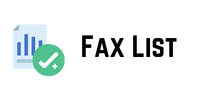Learning everything about PHP is essential for anyone preparing for web development. That’s why, on this occasion, we want to provide you with a simple guide to help you take your first steps in this programming language. We’ll begin by explaining its concept and also tell you a little about its origins. Then, we’ll detail its main features, show how it works with practical examples, and also provide a brief PHP tutorial.
But what is PHP?
PHP stands for Hypertext Pre- Processor. It’s a server-side scripting language, especially suited for web development and can be integrated into HTML.
This language is open source, making it available for other developers to use or modify as they see fit. It is also created under a free software license, allowing web pages to display dynamic content.
PHP code is always invisible to website middle east mobile number list visitors, as all the actions it performs are transformed into different types of multimedia content, which we interact with every time we visit a page.
A little bit of PHP history
The history of PHP dates back to 1994. Computer programmer Rasmus Lerdorf had created a simple set of Common Gateway Interface (CGI) binary files, written in the C programming language. All in order to track how many people accessed his personal website to read his resume.
At the time, it was called PHP Tools and it took a long time to become a language, as it was only considered a set of tools.
Lerdorf received requests from numerous people wanting to get their hands on the small program. Among them were Andi Gutmans and Zeev Suraski from Israel, who used PHP to create an e-commerce site.
Main features of PHP
Before reading the PHP tutorial, it’s important to understand the specific characteristics that define this scripting language. We’ll explore them below.
This code can be run on platforms such as Linux, Mac, Unix, OS X and Windows.
- Report errors
PHP has some default constants that are responsible for reporting errors by generating a warning.
- It monitors access
The language provides a log, creating a summary of recent accesses for the user.
- Case sensitive
PHP is a case-sensitive scripting boost marketing with bulk whatsapp service in china language. This is true when it comes to variables, constants, array keys, class properties, and class constants.
However, it can still act without distinction with functions, class constructors, class methods, and keywords.
As you can see, this is a powerful language full of possibilities. In addition, it is of utmost importance in web development processes. For this reason, we will continue to delve deeper into this topic before getting to the PHP tutorial you’ve been waiting for.
What is PHP used for?
PHP is used to create dynamic web pages . This language is processed on servers. It also ensures communication between the website and the server, allowing all content generated from a database or other external source to be displayed.
Its implementation ensures that each part works correctly so that visitors have a good experience. This is how data and how it is displayed on a website are separated.
PHP helps you build a stable, high-performance saudi data website. It also allows you to process form information, build web applications, send and receive cookies, and even create images from data.
This language is very easy to learn, allowing you to take advantage of all the advanced features it offers for web development. The most common dynamic applications that can be created with it include discussion forums and e-commerce.
In fact, it’s everywhere. One example is Facebook, which runs on PHP. This allows it to handle a huge amount of data and run a very dynamic website.
